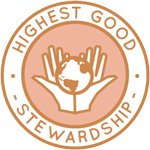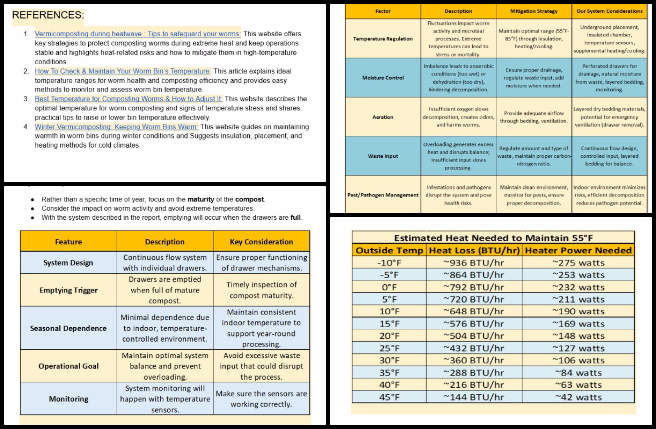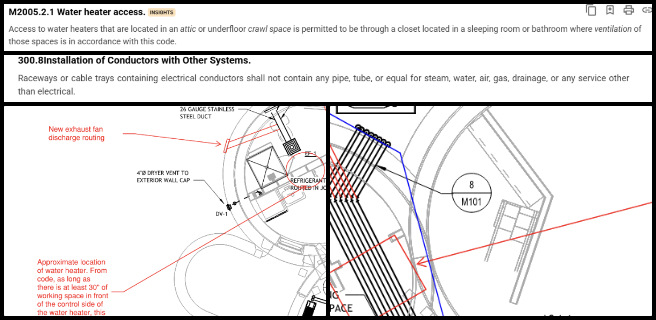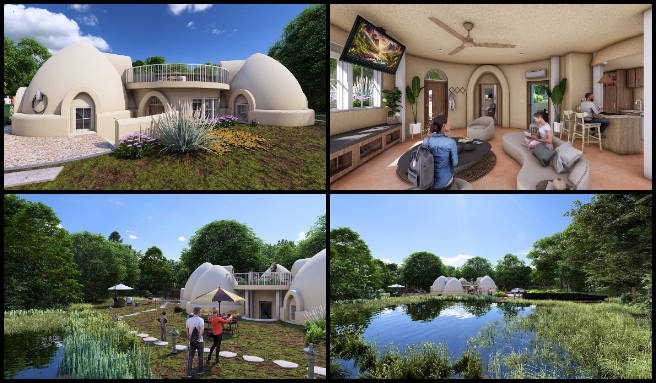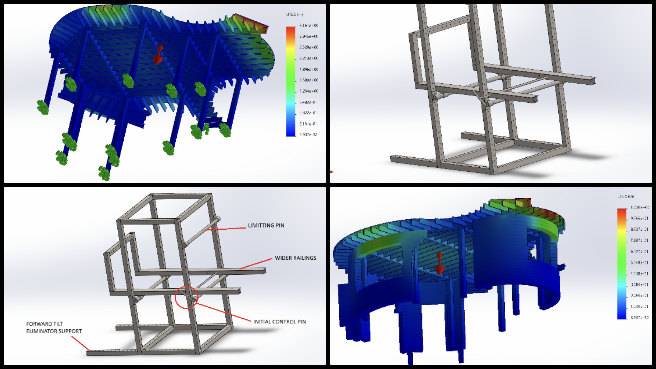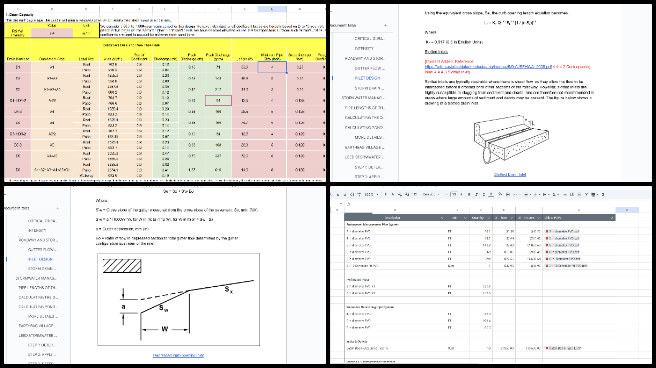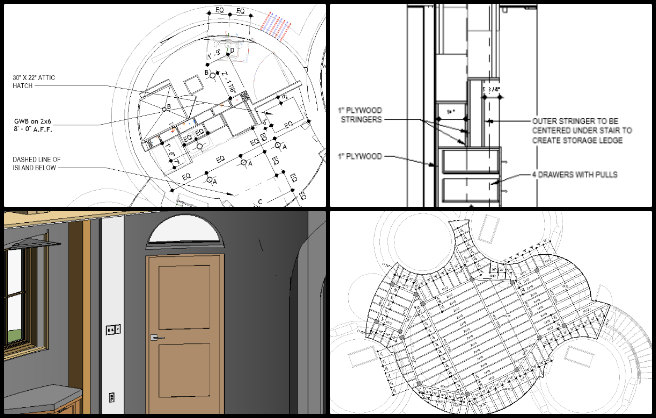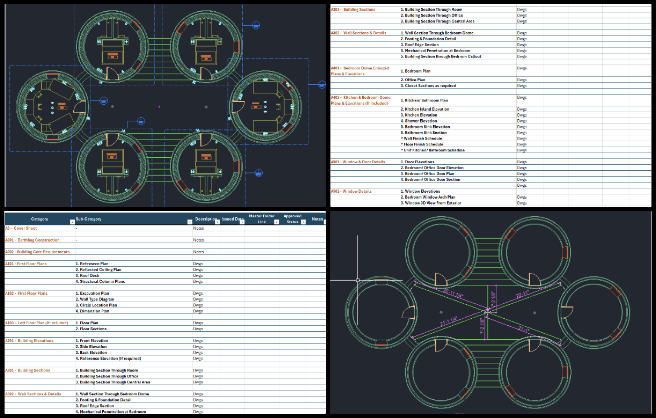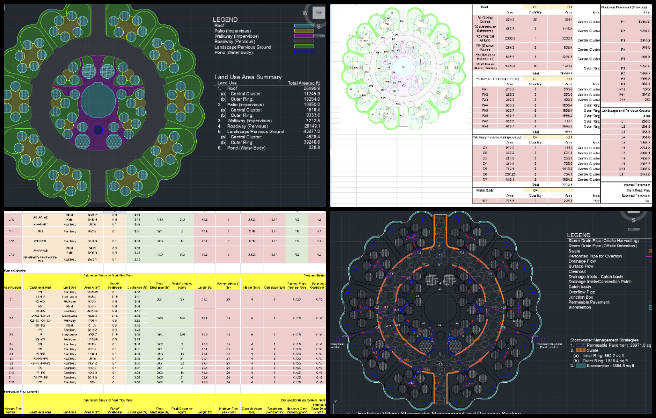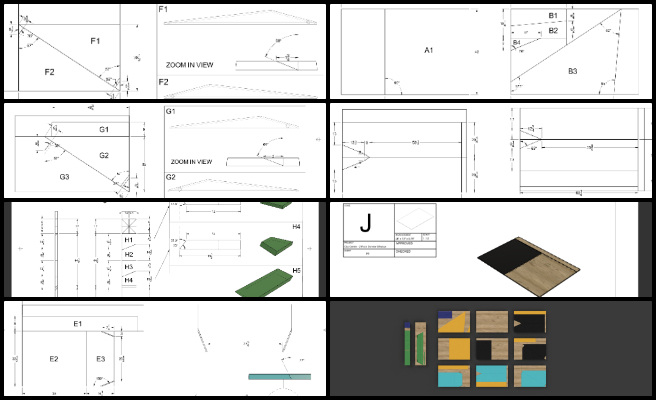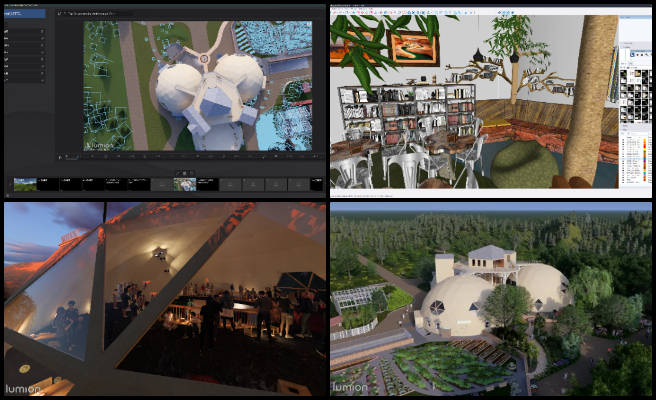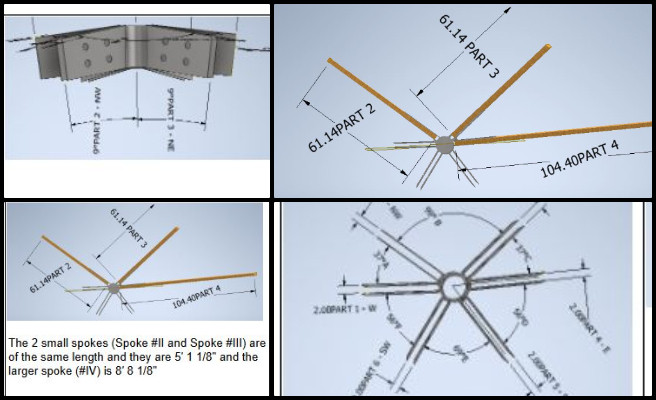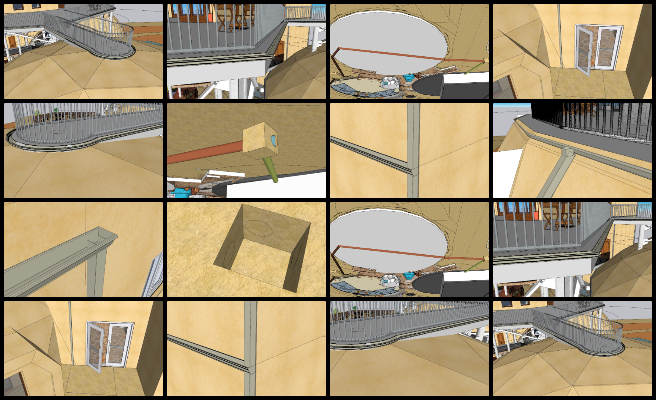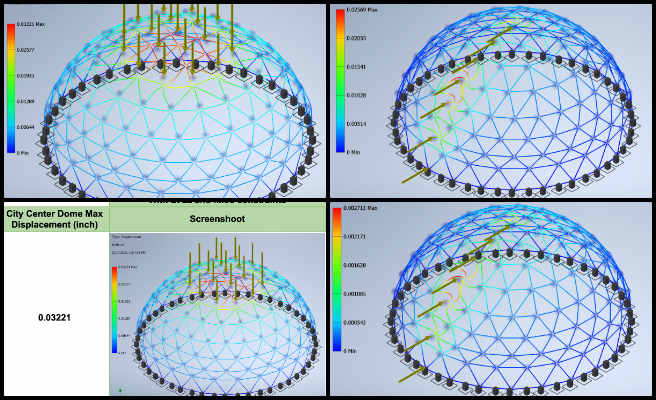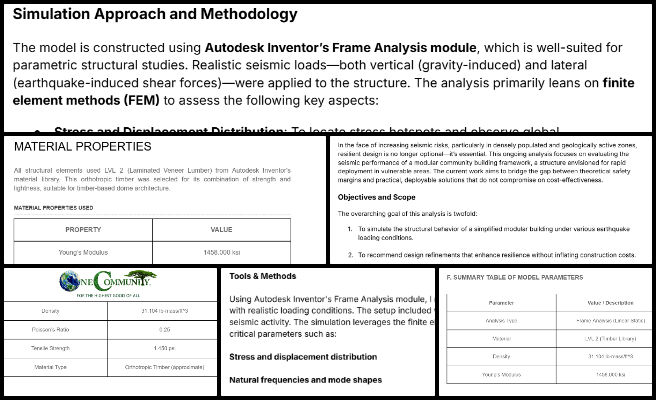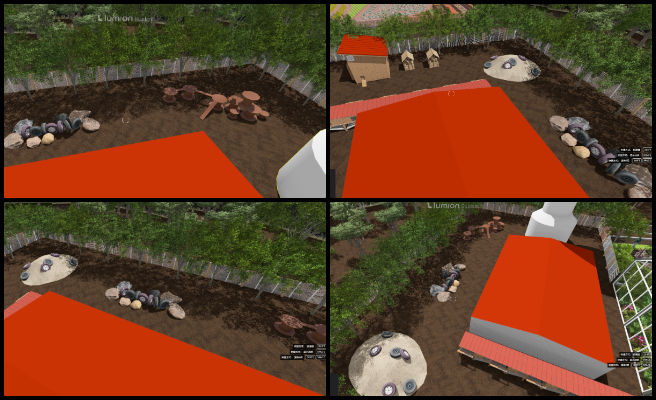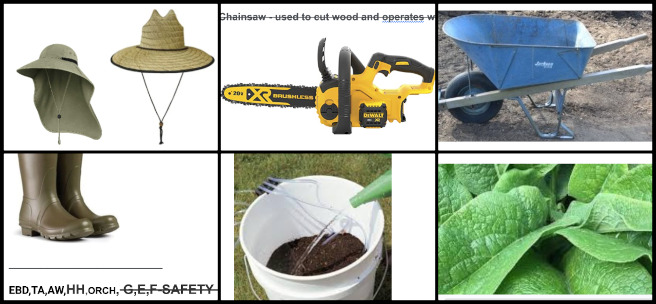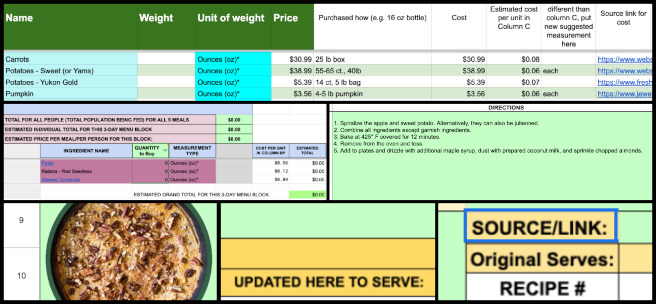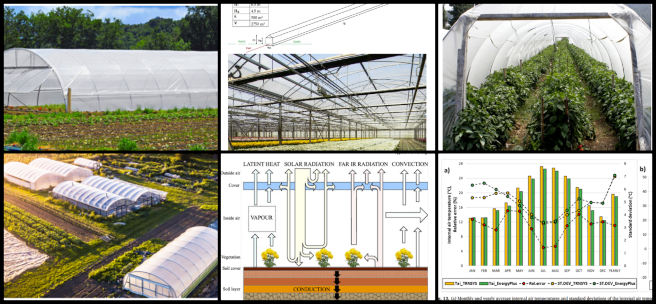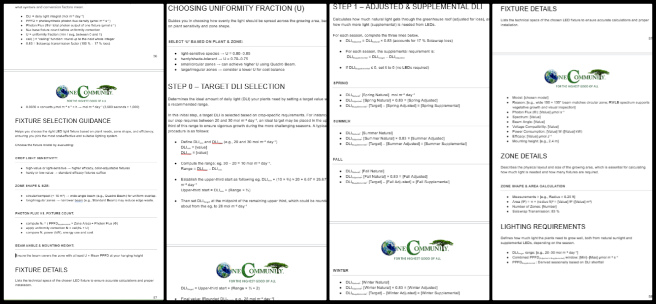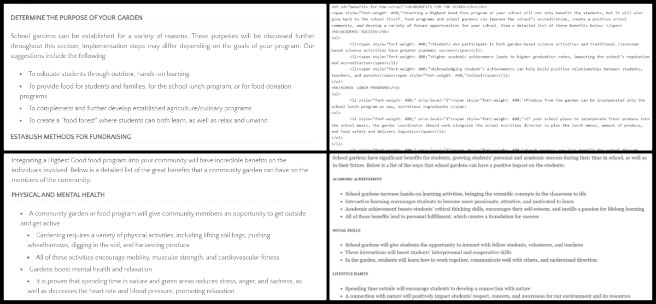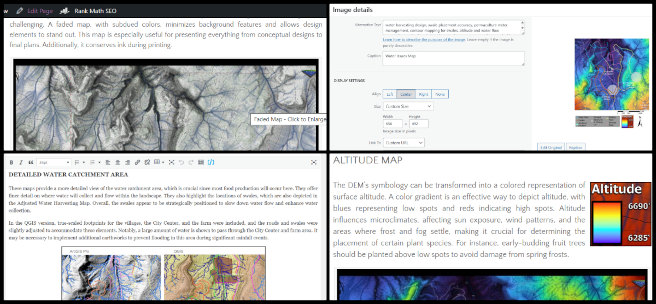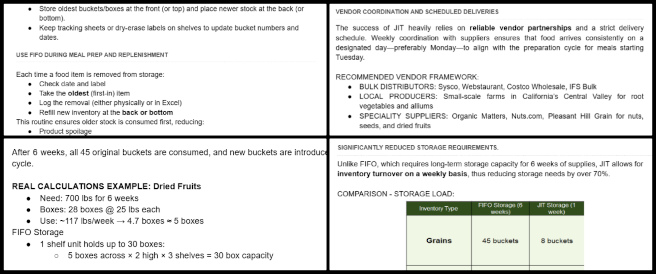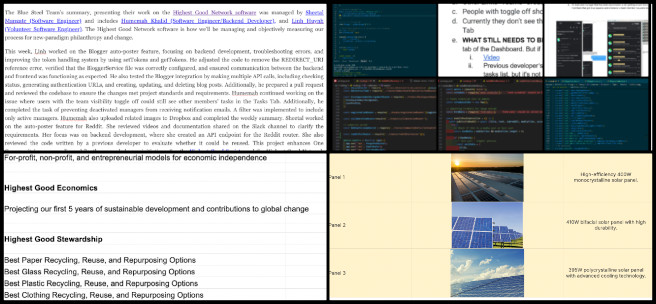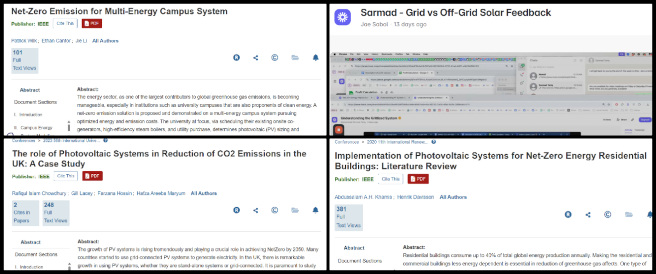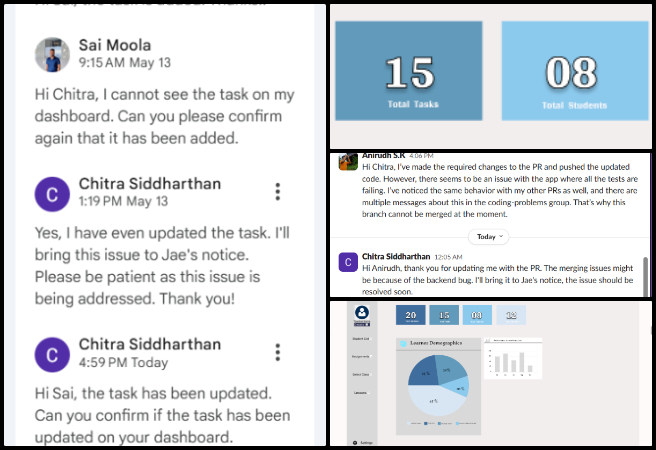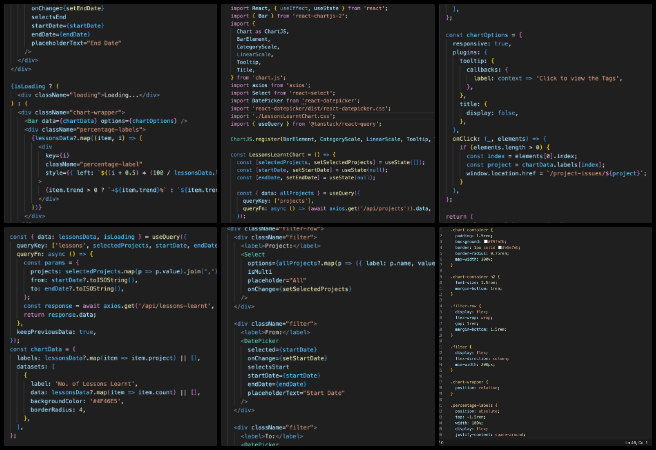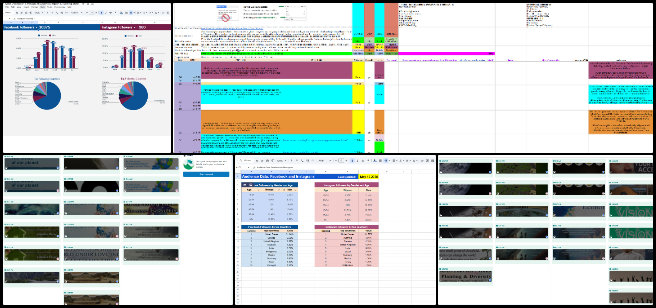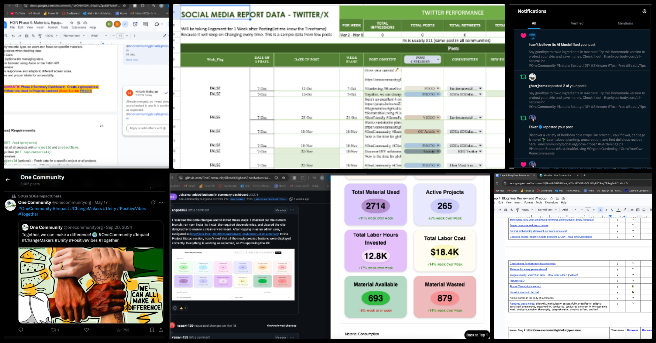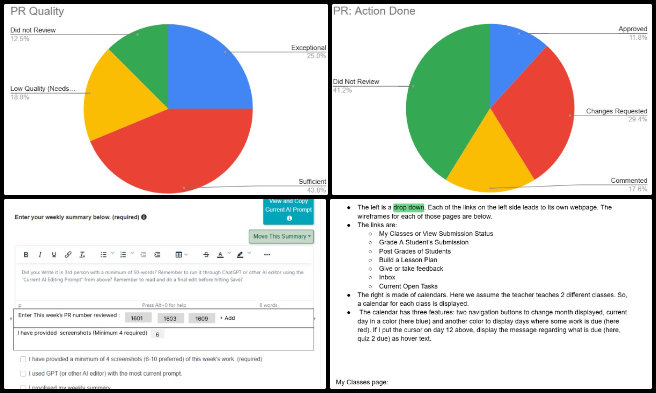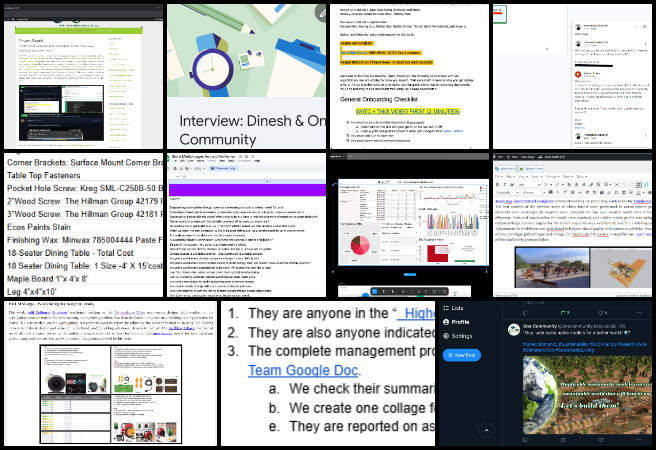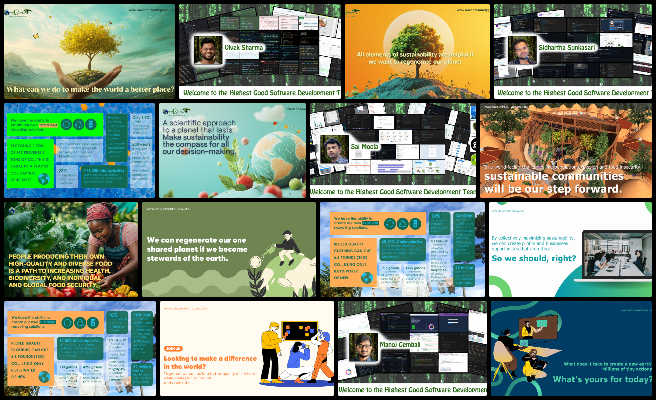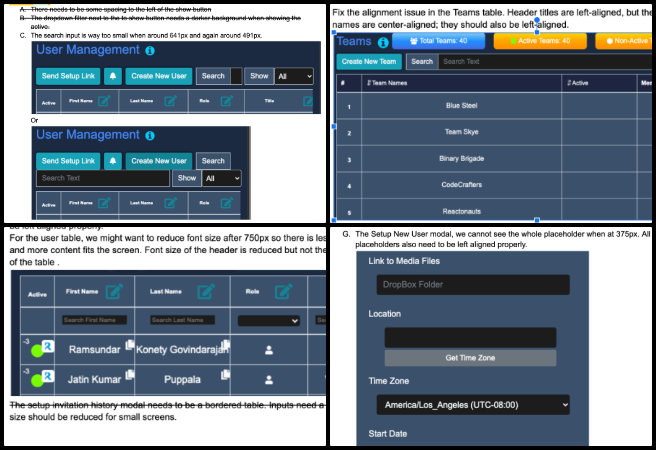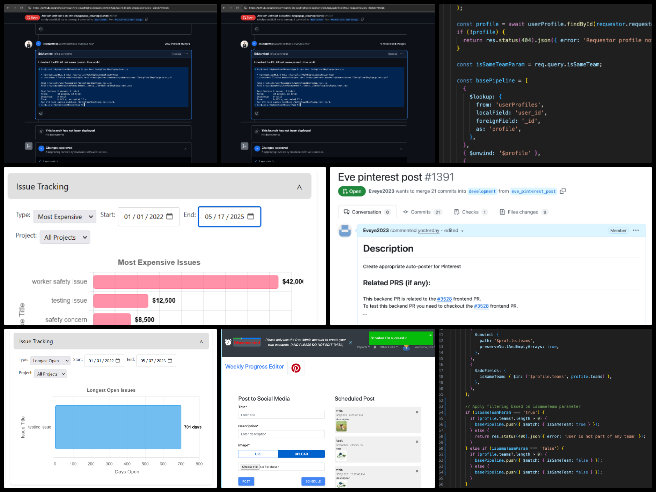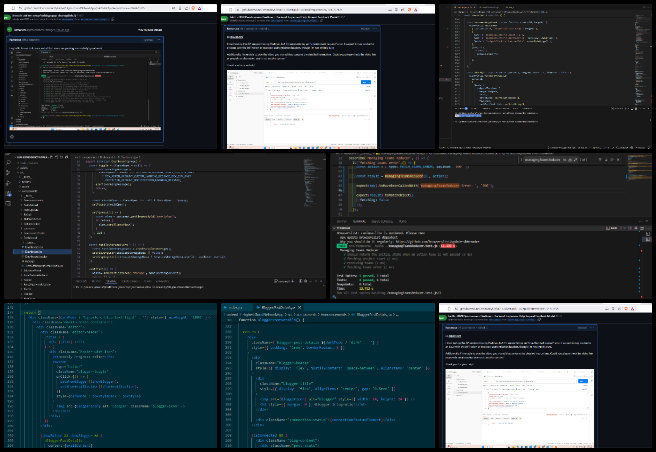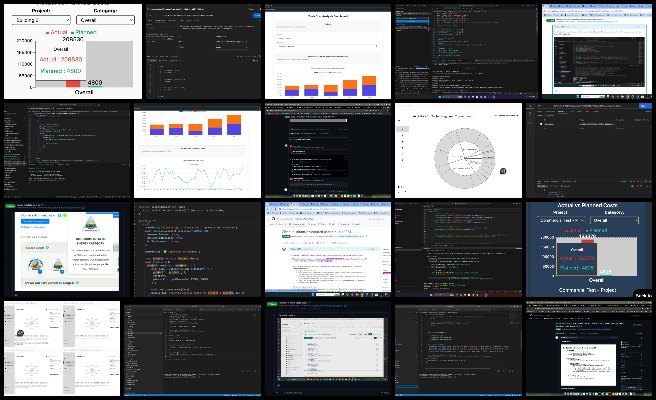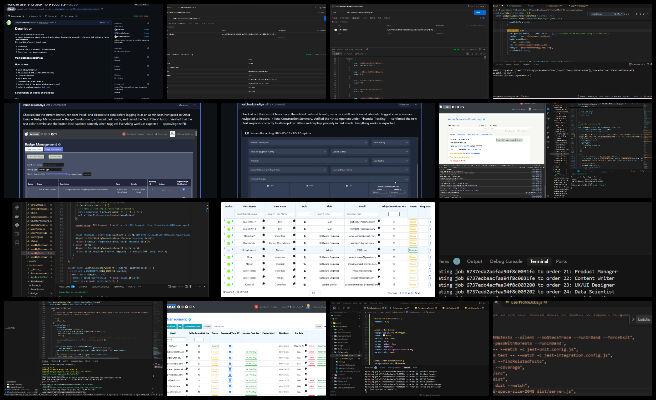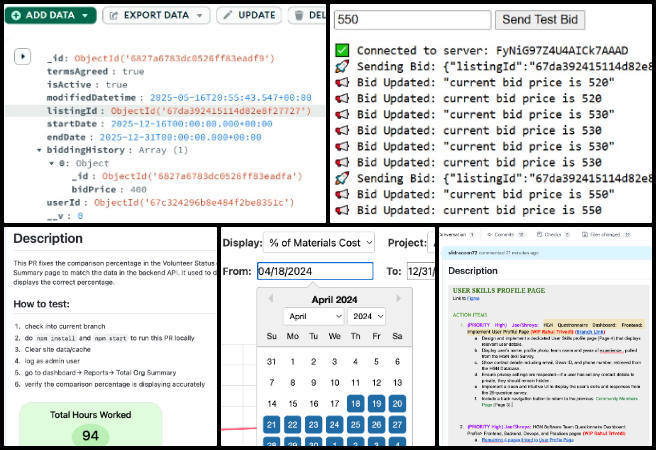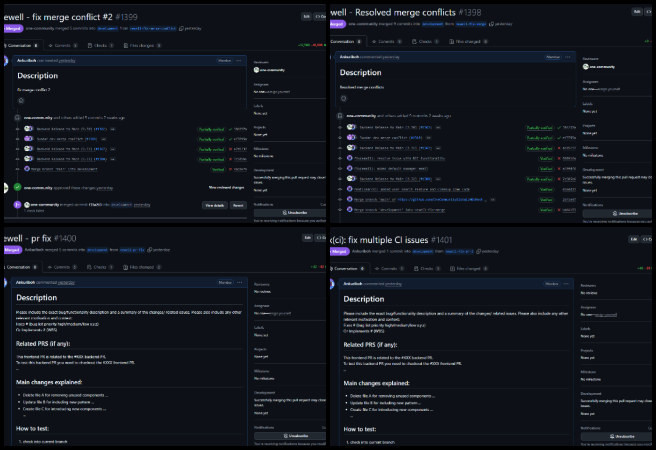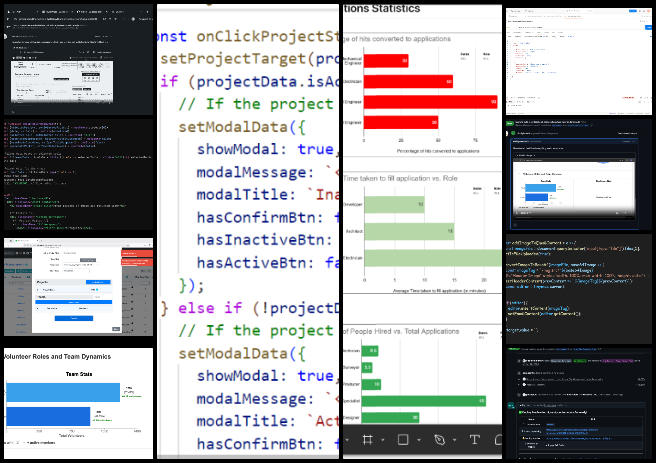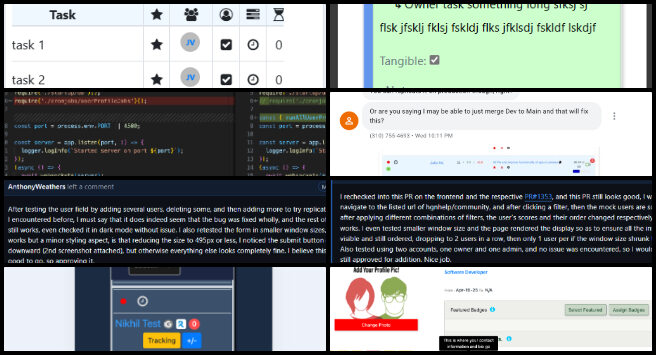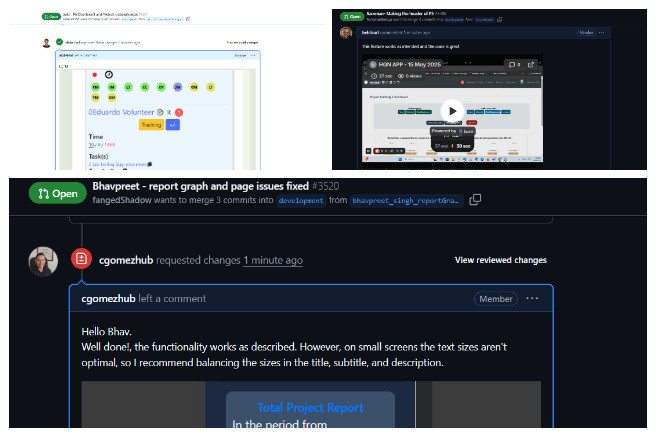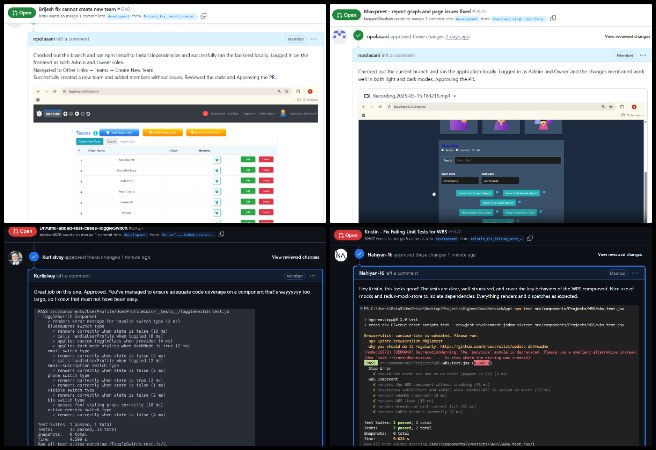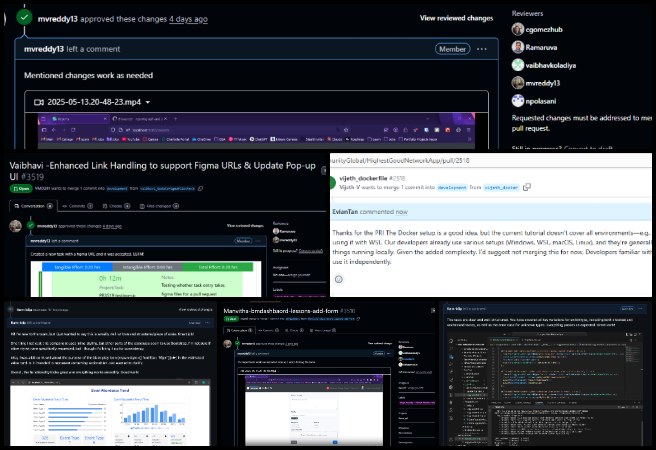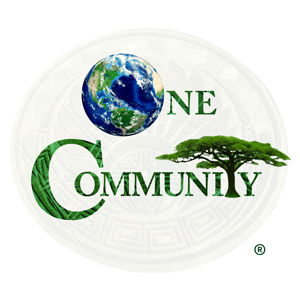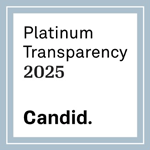Establishing Global Eco-balance – One Community Weekly Progress Update #635
At One Community, an all-volunteer organization, we are dedicated to establishing global eco-balance. We are supporting this with open source and sustainable approaches to food, energy, housing, education, for-profit and non-profit economic design, social architecture, fulfilled living, global stewardship practices, and more. Combining these, our model is designed to be self-replicating, inspiring others to join our mission of regenerating our planet through a global collaboration of teacher/demonstration hubs, where our sustainability practices will be further evolved and open sourced.
- Here’s our project overview
- Here’s our world-change methodology
- Here’s how this becomes self-replicating
- Here’s how we are open source and free-sharing all the do-it-yourself designs
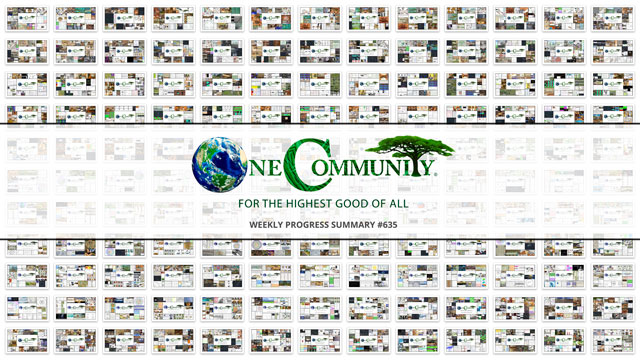
OUR MAIN OPEN SOURCE HUBS
Click on each icon to be taken to the corresponding Highest Good hub page.
One Community’s physical location will forward this movement as the first of many self-replicating teacher/demonstration communities, villages, and cities to be built around the world. This is the May 19th, 2025 edition (#635) of our weekly progress update detailing our team’s development and accomplishments:
Establishing Global Eco-balance
One Community Progress Update #635
DONATE | COLLABORATE | HELP WITH LARGE-SCALE FUNDING
CLICK HERE IF YOU’D LIKE TO RECEIVE AN EMAIL EACH WEEK WHEN WE RELEASE A NEW UPDATE
YOU CAN ALSO JOIN US THROUGH SOCIAL MEDIA
ONE COMMUNITY WEEKLY UPDATE DETAILS
HIGHEST GOOD HOUSING PROGRESS
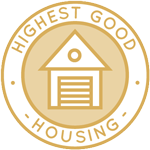 One Community is establishing global eco-balance through Highest Good housing that is artistic and beautiful, more affordable, more space efficient, lasts longer, DIY buildable, and constructed with healthy and sustainable materials:
One Community is establishing global eco-balance through Highest Good housing that is artistic and beautiful, more affordable, more space efficient, lasts longer, DIY buildable, and constructed with healthy and sustainable materials:
- Learn about: Our Upcoming Crowdfunding Campaign
- Learn about the different village models: 7 Sustainable Village Models
- Visit the open source portals for the first two: Earthbag Village OS Hub | Straw Bale Village OS Hub
This week, Adil Zulfiquar (Engineer) continued working on the Vermiculture Toilet engineering designs. Adil worked on incorporating feedback into the vermiculture operating conditions report and reformatted the content to meet webpage requirements. He updated all tables to improve clarity and alignment, added a disclaimer and safety guidelines based on operational requirements, and created a backup of all table contents and references used. The Earthbag Village, the first of seven planned villages, serves as the initial housing component within One Community’s open source model for establishing global eco-balance. See below for some of the pictures related to this work.
Derrell Brown (Plumbing Designer) continued working on the Earthbag Village 4-dome home plumbing and mechanical details. Derrell coordinated with Michaela to address follow-up items related to finalizing the mechanical, plumbing, and electrical plans. The focus was on identifying conflicts and discussing possible approaches for routing refrigerant lines, the water heater, and outdoor unit conduit in the attic space to avoid future issues. Before proposing any changes, he reviewed applicable code sources including the NEC, IPC, IMC, and IRC to determine clearance requirements along the proposed paths. He then compiled the relevant code information and created a markup showing alternative routing options that could better fit within the available space for the architect to review. One Community’s open source launching of establishing global eco-balance begins with Earthbag Village, the first of seven planned villages providing housing. See below for some of the pictures related to this work.
Faeq Abu Alia (Architectural Engineer) continued his work on the Earthbag Village 4-dome home renders. Faeq worked on finalizing the rendering of the walkthrough video for the 4-dome home, focusing on aligning all visual elements to reflect the improved indoor and outdoor spaces. The tasks included reviewing design details and making adjustments to various components to ensure the video accurately represents recent updates and provides a clear and cohesive presentation of the project. The Earthbag Village is the first of 7 to be built as the housing component of One Community’s open source plans for establishing global eco-balance. View examples of this work in the pictures provided below.
Karthik Pillai (Mechanical Engineer) continued helping finish the Earthbag Village 4-dome home roof plan. Karthik worked on the 4-dome cluster roof project by performing finite element analysis on the roof joist using an updated model that included rafter details provided by Michaela and incorporated sandbag walls into the structural model. After completing the analysis, he met with Michaela to review the results and discuss possible next steps, with plans to apply modifications based on their conversation. For the vermiculture project, he updated the waste dumping mechanism design based on input from Jae and prepared the model for finite element analysis. He also continued work on the main structure of the vermiculture toilet, began revising the design following additional feedback, and is in the process of updating the structural model in preparation for completing the final design and analysis. As the first of seven planned villages, the Earthbag Village provides the initial housing within One Community’s open source designs for establishing global eco-balance. See the work in the collage below.
Ketsia Kayembe (Civil Engineer) continued working on the Earthbag Village designs related to Rainwater Harvesting and Water Catchment. Ketsia created PDF documents for each item in the cost analysis of the stormwater and rainwater harvesting systems for the Earthbag Village, including product descriptions, dimensions, installation manuals, and other relevant details. She then worked on writing and refining the section on sizing curb inlets on grade for the open source page of the Earthbag Village stormwater system, describing their purpose, function, and the method for determining appropriate sizing using equations. Later in the week, she met with Yi-Ju to review progress and address questions and comments related to the updated rainwater harvesting design. After the meeting, Ketsia began incorporating the new design features provided by Yi-Ju into the cost analysis. One Community’s open source model for establishing global eco-balance begins with Earthbag Village, the first of seven planned villages providing housing. See below for some of the pictures related to this work.
Michaela Silva (Architect) continued working on the architectural details for the Earthbag Village 4-dome home design. Michaela continued refining the model and added specific details, including dimensioning and noting the attic hatch for the kitchen dome to allow the MEP team to re-route the conduits for the mini splits so they no longer run above the hatch. She increased the size of certain joists to 4×12 to allow them to rest on the earthbag walls. She also began developing electrical details, including the placement of bump outs for the junction boxes. As the first of seven villages in One Community’s open source plan for establishing global eco-balance, the Earthbag Village represents the housing element. See her work in the collage below.
Rumi Shah (Civil Engineer) continued working on the Earthbag Village upgrades to bring our designs closer to construction-ready plans. Rumi made several updates to the plan and checklist for the 6-dome earthbag structure to incorporate recent design refinements and align with the project’s structural and construction requirements. These adjustments improve clarity, enhance the sequencing of tasks, and provide a more accurate framework for execution and quality control across the project phases. One Community’s open source resources for establishing global eco-balance begin with the Earthbag Village, the first of seven planned villages providing housing. See below for some of the pictures related to this work.
Yi-Ju Lien (Environmental Engineer) continued her work on the Earthbag Village LEED points related to stormwater retention. Yi-Ju worked on finalizing the stormwater management plan design for the Earthbag Village, including detailed hydraulic calculations and CAD drawings. She modified the previous design by reevaluating the water harvesting approach, which initially used pervious pavement. Due to limited rainfall, this method was found to be inefficient as water infiltrated rather than flowed into the drainage system. Considering the ground level and slope, she revised the plan to collect runoff from the roofs and patios of the external clusters located on the downside of the Earthbag Village. She then designed a corresponding drainage system to reflect this change, developed a catchment area plan for each system, and updated the original spreadsheet data, highlighting the importance of maintaining collaboration and unity in establishing global eco-balance. See some of the work done in the collage below.
DUPLICABLE CITY CENTER PROGRESS
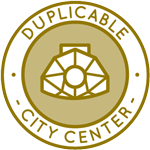 One Community is establishing global eco-balance through a Duplicable and Sustainable City Center that is LEED Platinum certified/Sustainable, can feed 200 people at a time, provide laundry for over 300 people, is beautiful, spacious, and saves resources, money, and space:
One Community is establishing global eco-balance through a Duplicable and Sustainable City Center that is LEED Platinum certified/Sustainable, can feed 200 people at a time, provide laundry for over 300 people, is beautiful, spacious, and saves resources, money, and space:
- Learn about this building and it’s function: Duplicable City Center Open Source Hub
This week, Andrew Chen (Industrial Designer) continued working on the Dormer second-floor window for the Duplicable City Center. He submitted his first material drawing and received feedback from Jae, with the main focus on repositioning parts to reduce material cuts. He spent the remainder of the week making adjustments based on the feedback and completed the rest of the material drawings for further review. The Duplicable City Center showcases One Community’s open-source contribution to establishing global eco-balance. Browse the photos below for a look at this work.
Jason Bao (Architectural Designer) continued working on producing renders for the Duplicable City Center library. The video renders were produced for testing purposes, and technical issues within the project files were identified and addressed. A file crash occurred during rendering, requiring recovery of partial progress and subsequent rework to stabilize the project. The rendering process was restarted after adjustments to mitigate instability, with efforts focused on restoring lost elements and refining the workflow to prevent recurring disruptions. Through the Duplicable City Center, One Community advances open-source innovation for establishing global eco-balance. See some of this work in the pictures below.
Manjiri Patil (Mechanical Design Engineer) continued working on the designs for the Duplicable City Center DIY-replicable hub connector. She has completed incorporating the feedback provided by Jae on the Excel sheet detailing the hub connectors for the library dome structure. She ensured that all suggested changes and improvements were reviewed and implemented. In addition, Manjiri is currently in the process of applying Jae’s comments and recommendations to the manufacturing process document to ensure consistency and clarity across all related project documentation. One Community’s Duplicable City Center exemplifies their commitment to open-source solutions aimed at establishing global eco-balance. Browse the photos below for a look at this work.
Mihir Patki (Civil and Construction Engineer) worked on updating the 2D CAD drawings for the Duplicable City Center project. He worked on final touchups to the SketchUp model and began designing the pipe routing from the kitchen and shower areas as directed. He focused on integrating these new elements with the existing drainage and catchment layout, making adjustments for alignment and consistency. Additional time was spent reviewing model components and improving organization within the file structure. Showcasing sustainability in action, the Duplicable City Center supports One Community’s vision of establishing global eco-balance through open-source design. View the images below to explore the progress.
Shu-Tsun Huang (Engineer) continued working on the Duplicable City Center by conducting the structural and frame analysis of the City Center dome using Autodesk Inventor, as well as working on the spreadsheet for which she is responsible. She advanced the structural load analysis by refining both wind and snow load assessments. She collected real-world wind data and added it to the spreadsheet. Using this data, Shu-Tsun updated the initial wind load models- which had produced less favorable results- resulting in more accurate outcomes aligned with site-specific conditions. Additionally, she ran a detailed snow load simulation using actual project data to verify and strengthen her revised analysis. As a model of sustainability, the Duplicable City Center represents One Community’s open-source path to establishing global eco-balance. Pictures below highlight our work.
Srujan Pandya (Mechanical Engineer) continued helping with the Duplicable City Center FEA analysis. He drafted content for the earthquake analysis section, pending Dipak’s results and approval. He also worked on restructuring the dome analysis report based on feedback, including revising language, updating formatting, editing tables, and reorganizing bullet points. One Community’s Duplicable City Center is a cornerstone project in their mission of establishing global eco-balance using open-source collaboration. See the images below for more. Some examples can be seen in the photos below.
Yan “Jenni” Zu (Architectural Designer) continued her work on the greenhouse area of the Duplicable City Center. She optimized the facilities in the animal area by adjusting their placement and layout to improve spatial organization and visual balance. She also changed the materials of these facilities, selecting textures and finishes that better match the natural surroundings and overall design style. These modifications enhanced the realism of the scene and contributed to a more cohesive and refined visual presentation. Additionally, the updated materials improved the lighting response in renders, making the final output more vibrant and detailed. Embodying sustainable design, the Duplicable City Center reflects One Community’s approach to establishing global eco-balance through open-source development. View related images below.
HIGHEST GOOD FOOD PROGRESS
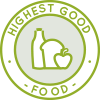 One Community is establishing global eco-balance through Highest Good food that is more diverse, more nutritious, locally grown and sustainable, and part of our open source botanical garden model to support and share bio-diversity:
One Community is establishing global eco-balance through Highest Good food that is more diverse, more nutritious, locally grown and sustainable, and part of our open source botanical garden model to support and share bio-diversity:
- Learn about the structures: Hoop House Hub | Aquapini & Walipini Open Source Hub
- See what we’ll be growing: Gardens & Hoop Houses | Large-scale Structures | Food Forest | TA
This week, the core team continued working on the Master Tools, Equipment, and Materials/Supplies document, including items related to the Goat, Chicken, and Rabbit sections. They completed the Orchard (ORCH) designations on the Master tools list and then began working on the Orchard section of the Tools, Equipment, Materials/Supplies, compiling a list of necessary items. The core team also eliminated duplications for the compost and woodchip entries. The Highest Good Food initiative is a key component of One Community’s open source plans, focused on establishing global eco-balance, and exemplifies the organization’s commitment through innovative design and implementation. Below are some of the images showcasing this work.
Chelsea Mariah Stellmach (Project Manager) continued her work on the Transition Food Self-sufficiency Plan menus and customization spreadsheets. She revised the two food plan reports according to Jae’s instructions, with a full set of new screenshots added to each section and the corresponding image files uploaded to a shared Dropbox folder. Additional updates included changes to formatting, content, and overall structure. While preparing to create a video tutorial, the original food procurement and storage plan was reviewed, prompting alignment with current practices as part of the upcoming collaboration on that component. As an essential aspect of One Community’s open source goals, the Highest Good Food initiative supports establishing global eco-balance as a foundation for sustainable living. Below are some of the images showcasing this work.
Dirgh Patel (Volunteer Mechanical Engineer) continued assisting with the Climate Battery design evolutions. He explored multiple greenhouse cooling strategies, including ventilation, shade curtains, evaporative cooling, and horizontal airflow systems. He reviewed the benefits and installation of landscape fabric for weed suppression, moisture retention, and erosion control. He read about high tunnels vs. greenhouses and grow bags vs. plastic pots. Dirgh studied a research paper on thermal simulation using TRNSYS, gaining insight into the impact of zoning, evapotranspiration, and radiation modeling on greenhouse energy efficiency. He finalized the report by uploading and linking relevant images, correcting grammar, summarizing visuals, and formatting the report sections and tables according to guidelines. One Community’s open source mission is powerfully reflected in the Highest Good Food initiative, which is focused on advancing and establishing global eco-balance for global benefit. The following visuals highlight key outcomes of this initiative.
Jay Nair (BIM Designer) continued working on Aquapini and Walipini Planting and Harvesting lighting and HVAC design. He modified the energy calculation template to match the formatting and structure required by the One Community standards. He began applying the updated template to calculate lighting energy requirements for each zone, adjusting input values and formulas to ensure consistency. The focus was on aligning calculations with project-specific expectations while maintaining clarity across the document. The Highest Good Food initiative plays a leading role in One Community’s open source platform, promoting and establishing global eco-balance through sustainable and participatory development. Below are some of the images showcasing this work.
Keerthi Reddy Gavinolla (Software Developer) continued working on the Highest Good Food page additions, covering small-business and urban community options. She updated the Expressers Team’s Blog #634 and continued work on the Highest Good Food Infrastructure website. She made changes as per Jae’s suggestions, edited bullet points by assigning h5 tags to main points and h6 tags to subpoints in the code. Keerthi also added link titles for hover effects and improved overall structure and readability. Built on One Community’s open source foundation, the Highest Good Food initiative drives establishing global eco-balance to empower communities with self-sustaining systems. Her contributions are highlighted in the collage below.
Pallavi Deshmukh (Software Engineer) continued working on adding the new Zenapini 2 content to the Aquapini and Walipini Planting and Harvesting page. She completed six interviews related to software development and administrative roles and submitted the necessary information. Based on feedback from Jae regarding the permaculture web page, she updated image titles, captions, and links. She worked on the Aquapini and Walipini Planting and Harvesting web page by editing images and adjusting text to match the specified requirements. Pallavi also created blog 634. Work on refining the layout and structure of the new page is still in progress. Fulfilling One Community’s open source objectives, the Highest Good Food project integrates establishing global eco-balance into a larger vision of regenerative living. Her contributions are highlighted in the collage below.
Tanmay Koparde (Industrial Engineer and Team Administrator) continued optimizing the Food Procurement and Storage Plan to enhance efficiency and sustainability. He initiated key supply chain concepts and carried out an in-depth analysis of FIFO (First-In-First-Out), Just-In-Time (JIT) procurement, and SAP modules including MM (Materials Management). He assessed the relevance and applicability of each within the current project scope, identifying both strengths and limitations. Additionally, Tanmay developed clear, actionable steps for implementing these methodologies into practical workflows. He effectively incorporated these concepts into his documentation, using real-life examples to illustrate how each approach can be effectively applied and utilized in real-world operations. Through the lens of open source development, One Community’s Highest Good Food initiative utilizes establishing global eco-balance to support replicable ecological solutions. See his work in the collage below.
HIGHEST GOOD ENERGY PROGRESS
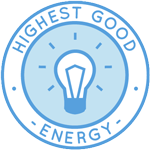 One Community is establishing global eco-balance through Highest Good energy that is more sustainable, resilient, supports self-sufficiency and includes solar, wind, hydro and more:
One Community is establishing global eco-balance through Highest Good energy that is more sustainable, resilient, supports self-sufficiency and includes solar, wind, hydro and more:
- Learn about the open source sustainable-energy foundations: Solar, Hydro, and Wind
- Explore our research into the most sustainable products and companies for saving water and energy: Insulation, Eco-laundry, Lightbulbs and Light Bulb Companies, Doors and Door Companies, Windows and Window Companies, Toilets, Faucets and Faucet Accessories, Urinals, and more.
This week, Dishita Jain (Data Analyst) continued assisting with the Highest Good Energy research and cost analysis for establishing global eco-balance. She worked on various tasks related to the HG Energy project and OC Administration. She focused on solar panel cost analysis, conducting research to support cost evaluation, and updating the Excel sheet based on feedback from Jae. She also reviewed a Loom video to address specific aspects of the cost analysis. Additionally, Dishita verified the icon list from the search engine. In the OC Administration project, she completed the training team review and provided feedback to fellow administrators. One Community’s open source mission is powerfully reflected in the Highest Good Energy initiative, which is focused on advancing and establishing global eco-balance for global benefit. Below are some of the images showcasing this work.
Muhammad Sarmad Tariq (Electrical Engineer) continued assisting with off-grid and grid-tied Solar Microgrid comparisons as part of the Highest Good Energy component. This is part of research for establishing global eco-balance, covering sustainable power supply. He received feedback from Jae on the draft version for the report on the calculator for calculating profit and net savings for an off-grid and a grid-tied solar PV system. He noted down the main points received in the feedback and started looking at options on how a net-zero PV system can be integrated with the calculations, which have already been included in the report. Driven by its open source philosophy, One Community created the Highest Good Energy initiative to pioneer sustainable practices through advancing and establishing global eco-balance. See his work in the collage below.
HIGHEST GOOD EDUCATION PROGRESS
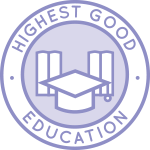 One Community is establishing global eco-balance through Highest Good education that is for all ages, applicable in any environment, adaptable to individual needs, far exceeds traditional education standards, and more fun for both the teachers and the students. This component of One Community is about 95% complete with only the Open Source School Licensing and Ultimate Classroom construction and assembly details remaining to be finished. We’ll report on the final two elements to be finished as we develop them. With over 8 years of work invested in the process, the sections below are all complete until we move onto the property and continue the development and open sourcing process with teachers and students – a development process that is built directly into the structure of the education program and everything else we’re creating too:
One Community is establishing global eco-balance through Highest Good education that is for all ages, applicable in any environment, adaptable to individual needs, far exceeds traditional education standards, and more fun for both the teachers and the students. This component of One Community is about 95% complete with only the Open Source School Licensing and Ultimate Classroom construction and assembly details remaining to be finished. We’ll report on the final two elements to be finished as we develop them. With over 8 years of work invested in the process, the sections below are all complete until we move onto the property and continue the development and open sourcing process with teachers and students – a development process that is built directly into the structure of the education program and everything else we’re creating too:
- Program Overview: Education Open Source Hub
- How the components work together in designing human orchestrated eco-abundance: How to use the Education for Life Program
- Lesson Plans for Life – Lesson Plans How-to
- Foundations of Outstanding Leaders, Teachers, and Communicators
- Curriculum for Life
- Teaching Strategies for Life
- Learning Tools and Toys for Life
- Evaluation and Evolution
This week, Chitra Siddharthan (Data Analyst and Team Administrator) continued focused on reviewing the contributions of team Code Crafters for week 634, as well as the individual submissions from Keerthi and Jaiwanth. Time was spent updating the blog and Dropbox, and addressing the issue of task visibility by adding missing tasks, reporting the problem to Jae, and compiling a list of tasks that had not been properly added. A user manual for Phase 2 was also worked on. Messages from developers experiencing task visibility issues were reviewed, and a list of tasks needing to be re-added was sent to Jae. Phase 4 work included meeting with Anuneet to explain how to document wireframes for approval and beginning revisions based on comments from Harshitha on the existing Teacher-Student Snapshot wireframe. Research was done to better understand expectations for the wireframes, including reviewing similar Teacher-Student Snapshot websites. Additional time was spent checking all HGN documentation to confirm that claimed tasks were added, and responding to messages on Slack and in the Phase 2 document regarding the status of task updates following a recent bug fix. Approximately 70% of the second version of the “Teacher Dashboard – Student List Snapshot” wireframe was also completed. The One Community approach to establishing global eco-balance uses sustainably built classrooms as a model for creating lasting, planet-wide change. See the collage below for her work.
Harshitha Rayapati (Program Manager) continued work on detailing deliverables for the Highest Good education software platform, outlining various components, developing Figma designs, and expanding the visual layout of the student dashboard. This week, her work focused on making progress on the Figma designs. The navigation bar layout for student, teacher, and learner support profiles was outlined to guide Anuneet’s continued design. Additional work involved detailing quick-view components in the left navigation bar of the student dashboard for Ravi to incorporate into Figma. Progress on Anuneet’s design for the common navigation bar and Ravi’s design for the student dashboard was resolved with comments shared for fixes, changes, and improvements, clarification was provided for associated screens. Jaiwanth was onboarded to Phase 4 front-end development and design tasks, aligning his work with the prioritized Figma designs. Updates were gathered from Sidhartha, Chitra and Akhil on front-end and back-end progress, with blockers addressed and component descriptions provided through calls for clarification. Additionally, worked on compiling the weekly blog update, reviewed the Graphic Design Team’s weekly progress, edited the blog page and created a collage. The One Community model of establishing global eco-balance with sustainably built classrooms like this is an excellent example of sustainable change for the whole planet. See the collage below for her work.
Mrinalini Raghavendran (Software Engineer) continued refining and documenting both frontend and backend requirements for various graphs. She worked on an existing task by adding more functionality and styling, and refactored the previously written code. She modularized the code to improve structure and readability, and further broke down the component into smaller parts. She made changes to the backend data fetching logic to fix local bugs and implemented a filter dropdown for projects. Styling was separated into its own file, and Mrinalini continued making adjustments to the component’s appearance across the week. By forwarding an establishing global eco-balance with classrooms like this, One Community provides a replicable example for global sustainable development. See the collage below for her work.
HIGHEST GOOD SOCIETY PROGRESS
 One Community is establishing global eco-balance through a Highest Good society approach to living that is founded on fulfilled living, the study of meeting human needs, Community, and making a difference in the world:
One Community is establishing global eco-balance through a Highest Good society approach to living that is founded on fulfilled living, the study of meeting human needs, Community, and making a difference in the world:
- Read the Highest Good society overview: Highest Good Society
- Learn about the model for fulfilled living and sharing: A Day in the Life
- Learn about the 4 economic models: RBE | For-profit | Non-profit | Entrepreneurship
- Learn about our open source community collaboration and management software: The Highest Good Network
This week, the core team completed over 55 hours managing One Community’s volunteer-work review not included above, emails, social media accounts, web development, new bug identification and bug-fix integration for the Highest Good Network software, and interviewing and getting set up new volunteer team members. They also shot and incorporated the video above that talks about establishing global eco-balance and how establishing global eco-balance are a foundation of the bigger picture of everything One Community is doing. The image below shows some of this work.
Govind Sajithkumar (Project Manager) continued focusing on Meta platform analytics and content management for Facebook and Instagram channels. He refreshed social media feeds with new posts and maintained the regular posting schedule for brand visibility. He recorded content details in the Open Source spreadsheet, capturing metadata including post descriptions, media types, and publishing timestamps for each entry. He aligned publication times with audience engagement windows to influence reach across both platforms. Govind updated the social media analytics spreadsheet with the latest audience metrics, collecting and processing new demographic data for Facebook and Instagram. He maintained data integrity through quality checks and refreshed reporting frameworks with current performance statistics. Beyond Meta responsibilities, he completed PR Review Team management tasks, providing feedback on team member documents, updating his WordPress site with team summaries and collages, maintaining PR tracking tables with required information, and submitting his admin feedback table for peer review. This effort supports One Community’s broader mission of establishing global eco-balance. The images below showcase some of this work.
Hritvik Mahajan (Data Analyst) continued focusing on marketing and administrative tasks. He focused on software frontend testing and social media post management for the HGN project. He reviewed multiple pull requests, identified issues, and followed up with team members on Slack to address requested changes and resolve merge conflicts. His work on the development side spanned several days, contributing to progress in Phase 1 of the software frontend testing. In parallel, Hritvik also contributed to the marketing and promotion efforts by identifying and posting top-performing content across Twitter communities, based on engagement metrics. This involved selecting and sharing posts with the highest interaction rates and maintaining consistency in the project’s promotional efforts. This initiative furthers One Community’s goal of advancing establishing global eco-balance. The following images show his work for the week.
Jaiwanth Reddy Adavalli (Project Manager) continued developing the Job Applicants page and the Highest Good Network Phase 2 Dashboard. He worked on the development of the HGN Phase 4 software dashboard and the PR Team analytics dashboard. He created wireframes and wrote action items to guide further software development. As part of the PR review team, he reviewed the pull requests of the volunteer team assigned to him. This project plays an important role in One Community’s commitment to establishing global eco-balance. The following images show his work for the week.
ADMINISTRATION TEAM
The Administration Team summary, covering their work administering and managing most of One Community’s ongoing process for establishing global eco-balance was managed by Bhakti Tigdi (Project Manager) and includes Anuneet Kaur (Administrator), Himanshu Mandloi (Engineering Project Manager), Jibin Joby (Data Analyst), Khushie Zaveri (Communication Strategist), Neeharika Kamireddy (Data Analyst), Olawunmi “Ola” Ijisesan (Administrative and Management Support), Rachna Malav (Data Analyst), Rishi Sundara (Quality Control Engineer and Team Administrator), Ryutaro Wongso (Economic Analyst and Team Administrator), Saumit Chinchkhandi (Administrative Assistant and Software Engineer), and Vishnu Murali (Data Analyst). The Highest Good Network software is how we’ll be managing and objectively measuring our process for establishing global eco-balance through our social architecture, construction, production, and maintenance processes.
This week, the Administration Team contributed across areas such as sustainability research, onboarding, analytics, project coordination, training support, and content development. Anuneet researched sustainable glass resources, analyzed community recycling strategies, created visuals for the Highest Good education Program Licensing and Accreditation webpage, coordinated the live blog task, and completed the shared navigation bar for student users in Figma. She also reviewed training work and completed administrative tasks for the Highest Good Society team. Himanshu conducted daily timelog reviews, updated task assignments and hours, addressed engagement concerns, and published a mission-aligned blog post. Jibin reviewed Housing Team contributions, created collages, updated pages, scraped BlueSky analytics using Python, and kept platform engagement active. Khushie continued the Metrics campaign, onboarded a new member, created a media kit and press email template, and engaged with audiences via Mastodon and Reddit. Neeharika completed her PR admin training, explored the PR Review Team Analytics Dashboard, and mentored a new admin. Ola trained a new PR team manager, ensured workflow accuracy, and managed Pinterest scheduling.
Rachna conducted volunteer interviews, handled rescheduling, worked on SEO pages, and monitored team communications. Rishi created and merged blog collages, optimized SEO, reviewed pull requests, and updated his personal blog. Ryutaro advanced cost analysis for the Duplicable City Center Cost Template, reviewed developer outputs, and created a team blog. Saumit managed PR workflows for A–F contributors, tested frontend pull requests, updated his blog with summaries and visuals, and applied peer feedback. Vishnu supported the Lucky Star team, visualized BlueSky data, fixed bugs, maintained platform activity, and prepared for his transition out. This work contributes to One Community’s commitment to establishing global eco-balance. See below to view images of their work.
GRAPHIC DESIGN TEAM
The Graphic Design Team’s summary was managed by Harshitha Rayapati (Program Manager) and includes Aurora Juang (Graphic Designer), and Junyuan Liu (Graphic Designer, UI/UX Designer) covering their work on graphic designs for establishing global eco-balance. This week, Aurora concentrated on producing multiple social media posts and overseeing volunteer announcements. She completed the chapter icons for the Seven Villages book and website, repaired broken links in the digital edition, and corrected previous errors in bio announcements. Using Google Sheets, she published updated volunteer bios with a focus on accuracy and consistency.
Junyuan created social media content by collecting images, exploring design options in design software, and completing three new social media images. Initial steps were also taken to source images and develop design concepts for the next visual piece. In addition, he brainstormed strategies for future image creation and worked on the “Most Sustainable” image by inserting text and adjusting the layout. See the Highest Good Society pages for more on how this contributes to establishing global eco-balance. See the collage below to view some of their work.
HIGHEST GOOD NETWORK PROGRESS
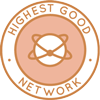 One Community is establishing global eco-balance through open source Highest Good Network® software that is a web-based application for collaboration, time tracking, and objective data collection. The purpose of the Highest Good Network is to provide software for internal operations and external cooperation. It is being designed for global use in support of the different countries and communities replicating the One Community sustainable village models and related components.
One Community is establishing global eco-balance through open source Highest Good Network® software that is a web-based application for collaboration, time tracking, and objective data collection. The purpose of the Highest Good Network is to provide software for internal operations and external cooperation. It is being designed for global use in support of the different countries and communities replicating the One Community sustainable village models and related components.
- Learn about our open source community collaboration and management software: The Highest Good Network
This week, the core team continued their work on the Highest Good Network PRs. Confirmed fixed items included restoring header formatting (PR #3475), updating tabs in User Profiles to display only the person’s name (PR #3110; update #3319), fixing the timer service on the migrated URL (PR #3351), implementing autosave for the userProfile QST (PR #3353), adding frontend pages for the new Google Form equivalent for the Technical Support and Advisory Volunteer Agreement (PR #3356), and making tasks in the User Management component clickable hyperlinks (PR #3136). Unresolved issues included improper formatting on the Bidding Overview page (PR #3343), misaligned header titles and team name box formatting on the Profile page (PR #3369), the task table not being scrollable and limiting visibility to only a user’s tasks (PR #3372), UI issues on the User Management page (PR #2583), and formatting problems on the Teams page (PR #3366). Additionally, they assigned tasks to eight volunteers and updated the task “Fix task date editing crashing webpage” by adding 25 more hours. These improvements represent incremental steps toward establishing global eco-balance. See the Highest Good Society and Highest Good Network pages for more on how this relates to establishing global eco-balance. The collage below shows some of their work.
ALPHA SOFTWARE DEVELOPMENT TEAM
This week, the Alpha Software Team, covering their progress on the Highest Good Network software, was managed by Lin Khant Htel (Frontend Software Developer), and the team includes Eve Ye (Volunteer Software Engineer Intern), Jiaqi Nie (Software Engineer), and Nikita Kolla (Full Stack Developer). This platform streamlines internal communication and operations with the overarching aim of establishing global eco-balance. Lin reviewed and approved PR #3484 after testing it on a local machine and confirming that all test cases passed. He also reached out to team members for consultation, reviewed Alpha Team members’ weekly summaries, photos, and videos, and handled overall team management duties. This work reflects One Community’s ongoing commitment to establishing global eco-balance.
Eve focused on integrating her frontend and backend work into the develop branch. She began by merging both of her branches and resolved the merge conflicts that occurred during the process. Her initial pull request did not pass the automated system checks due to ESLint violations and pre-existing bugs in the development branch that affected the files she had modified. Eve addressed the ESLint issues and fixed those bugs. She submitted and merged two pull requests: #3528 and #1391. Jiaqi completed the implementation of the Dynamic Scoring and Ranking Logic for the questionnaire dashboard backend. He also added a static field to replace a variable in the original function. While preparing to test his implementation, he identified an error in the development branch, reported it to Jae, and assisted in finding the appropriate developer to resolve the issue. Nikita completed the Phase 2 Summary Dashboard task, which included the horizontal bar graph for P5. She also finalized the longest open issues chart and the most expensive issues task. After completing testing and preparing the core components, she began the pull request process. See the images below for more illustrations of the team’s work, reflecting the vision of establishing global eco-balance.
BINARY BRIGADE SOFTWARE DEVELOPMENT TEAM
The Binary Brigade Team’s summary overseeing advancements in the Highest Good Network software was managed by Aureliano Hubert Maximus (Volunteer Software Engineer) and includes Amalesh Arivanan (Software Engineer), Anirudh Sampath Kumar (Software Developer), Geeta Matkar (Software Engineer), Jaissica Hora (Software Engineer), Nikhil Routh (Software Engineer), Sabitha Nazareth (Software Engineer), Samman Baidya (Software Engineer), Sidhartha Sunkasari (Software Engineer), Sriram Seelamneni (Software Engineer), and Vamshi Gutha (Full-Stack Developer). The Highest Good Network software is how we’ll be managing and objectively measuring our progress in establishing global eco-balance through our social architecture, construction, production, and maintenance processes.
This week, Amalesh worked on fixing the pause and reactivation feature for user status, addressed linting errors that had caused over 300 issues, and resolved related unit test failures while establishing global eco-balance through improved automation. He uploaded documentation to Dropbox, tracked time, and completed onboarding steps to retain access to project tools. Anirudh resolved merge conflicts in two permission-related pull requests and investigated failing test cases, establishing global eco-balance by maintaining code integrity. He also corrected and resubmitted an incorrect file in two additional PRs, requiring extra effort that resulted in overcharged hours. Geeta completed the task on social media data analysis and dashboard UI/UX mockups in collaboration with Raghav and Olimpia, establishing global eco-balance by enabling insight-focused design. She resumed work on the people report for narrow screens but encountered a UI issue that blocked further progress.
Jaissica implemented backend logic and a new MongoDB schema for a grouped bar graph displaying injury severity by worker category, establishing global eco-balance through structured data handling. She tested the API with 15 scenarios to ensure output accuracy and built routing with Express and Mongoose. Nikhil converted 280 files from standard CSS to CSS Modules, updated imports, and fixed dynamic class handling issues, establishing global eco-balance by improving styling maintainability. His updates ensured compatibility across the newly modularized codebase. Sabitha pushed new images to the database, requested missing assets, and completed listing and bidding tasks, establishing global eco-balance by ensuring data completeness and media accessibility. She tested the related APIs and submitted a pull request with documentation.
Samman resolved deployment issues and built filters and endpoints for a grouped bar graph tracking injury severity by project, establishing global eco-balance through scalable data visualizations. He also debugged the integration process and began connecting filters to the API. Siddhartha implemented backend models for the education portal based on UML diagrams and refined data relationships, establishing global eco-balance by improving learning system architecture. His focus was on aligning the models with access control and authentication requirements. Sriram finalized the Supplier Performance graph, submitted the backend PR, and resolved merge conflicts across multiple pull requests, establishing global eco-balance by enabling clearer performance tracking. His work prepared previous submissions for successful integration. Vamshi initiated Phase 2 of the Summary Dashboard with a line chart to visualize injuries over time, establishing global eco-balance through improved data clarity. The chart structure, sample plotting, and axis configuration were completed while laying groundwork for interactivity and layout refinement. See the Highest Good Society and Highest Good Network pages for more on how this relates to establishing global eco-balance. View some of the team’s work in the collage below.
BLUE STEEL SOFTWARE DEVELOPMENT TEAM
The Blue Steel Team’s summary, presenting their work on the Highest Good Network software was managed by Sheetal Mangate (Software Engineer) and includes Linh Huynh (Volunteer Software Engineer), Ramakrishna Aruva (Software Engineer), and Sharan Sai Marpadaga (Software Developer). The Highest Good Network software is how we’ll be managing and objectively measuring our process for establishing global eco-balance. This week, Linh completed the full implementation of the Blogger auto-poster feature across both the frontend and backend, finalized the code, performed cleanup and refactoring, addressed all ESLint issues, and submitted two pull requests with testing instructions and documentation. Ramakrishna focused on reviewing pull requests, starting with an attempt to run the backend dev branch but encountered technical issues with node modules due to recent changes, which he was unable to resolve and has requested assistance. He then switched to another branch without the latest backend changes and was able to review the code and provide comments. He was assigned four additional pull requests to review, including one related to the DM Dashboard lesson page feature, and reviewed unit test case integration to improve his understanding of the testing approach used in the codebase. This effort supports One Community’s mission of establishing global eco-balance.
Sharan addressed an issue with his laptop that had prevented access for several days due to a login problem involving a missing private key and Microsoft account password. The problem was resolved, and he plans to raise a pull request for his current task. Sheetal worked on a review comment related to the managingTeamsReducer test case, fixed the code, tested all scenarios, and pushed changes to the branch sheetal-unit-test-managing-teams-test. She also explored how to spy on console.log in Jest test cases and resolved merge conflicts in two previously created pull requests for the branches sheetal-re-engagement-strategies-frontend and sheetal-phase3-backend-re-engagement-strategies-follow-up-email. This project enhances One Community’s new-paradigm philanthropy and change initiatives. See the Highest Good Society and the Highest Good Network pages to learn more on how their work contributes to establishing global eco-balance. See below to view images of their work.
CODE CRAFTERS SOFTWARE DEVELOPMENT TEAM
The Code Crafters Team, covering their work on the Highest Good Network software, was managed by Sundar Machani (Software Engineer) and includes Ashrita Cherlapally (Software Engineer), Dhrumil Dhimantkumar Shah (Software Engineer), Humera Naaz (MERN developer), Pratyush Prasanna Sahu (Software Engineer), Rahul Prasad (Software Engineer), Ravikumar Sripathi (Software Engineer), Sai Moola (Software Engineer), Sravan Kumar Bodakonda (Software Engineer), and Xiaolei Zhao (Software Engineer). The Highest Good Network software is how we’ll manage and objectively measure our process for establishing global eco-balance through our social architecture, construction, production, and maintenance processes.
This week, Sundar worked on the Phase 2 Summary Dashboard, creating the Expected vs. Actual Expense Graph with filtering dropdowns and a chart legend. He developed a project dropdown using the bm/project API, implemented a working filter, submitted pull requests for both frontend and backend components, and resolved merge conflicts. He also recorded a functionality video, reviewed the component, and submitted the week’s summary with updates. This work advances One Community’s dedication to establishing global eco-balance. Ashrita resolved a backend issue that was preventing an expenditure pie chart API from returning data by correcting the MongoDB collection mapping in the Mongoose model. After confirming the API was returning the expected output in Postman, she began rendering the actual and planned expenditure pie charts on the frontend using Recharts and adjusted the layout to align them within the Financials Tracking section of the Weekly Project Summary Dashboard. Dhrumil submitted a pull request for unit tests related to the “WBS/WBSDetail/ImportTask/ImportTask.jsx” component but encountered unresolved linting errors. In parallel, he began work on a new frontend task focused on building the bidding homepage. Humera worked on updating the minimum hour badge by calculating the ratio of the user’s weekly hours to total hours worked and adjusting the badge level accordingly. She retrieved user data, compared the current badge with the computed ratio, and replaced it where upgrades were needed. The logic was implemented in the badge assignment module to reflect real-time user activity. This contribution furthers One Community’s goal of establishing global eco-balance.
Pratyush implemented a data visualization dashboard in ToolsCostRentals.jsx featuring a stacked bar graph and a line chart to analyze tool costs across projects. The dashboard supports filtering by project and date range, with charts that update dynamically. The implementation uses Chart.js and includes mock data generators for testing. Rahul worked on the Old Frontend PR Cleanup Task, focusing on several pull requests: PR-1710, PR-1750, PR-1984, PR-2210, PR-2769, and PR-2761. Each was tested to confirm that functionalities performed as expected. Since some of these PRs were approved more than five months ago, he created new PRs to replace them and allow for review against the current codebase. Summaries and notes were added to the “Old Frontend PR Clean Up Task (Rahul Prasad)” tab for reference. This contribution supports One Community’s ongoing work in establishing global eco-balance. Ravikumar refined the Student Dashboard based on earlier feedback, ensuring consistent component placement throughout the layout. He updated the subject molecules section to include interactive behavior that reveals tasks and sub-tasks and designed the To-Do page, where grouped activities include sub-task breakdowns, progress bars, and suggested timelines. These changes aligned with project structure and improved overall layout and user flow. This effort is integral to One Community’s commitment to establishing global eco-balance.
Sai resolved the failing checks on PR #3357, and all checks subsequently passed. He completed the task “Create Predicted Cost and Actual Cost Line Chart in Phase 2 Dashboard,” submitting frontend PR #3514 and backend PR #1383. After raising frontend PR #3514, he encountered the same failing checks seen in PR #3357. Discussions with other developers confirmed this was a common issue affecting multiple frontend PRs. After another developer pushed a fix, Sai cherry-picked the relevant commit from the development branch and applied it, successfully resolving the problem and allowing the checks to pass. This work helps realize One Community’s vision for establishing global eco-balance. Sravan developed a line chart to display total injuries over time for the Phase 2 Summary Dashboard. He reviewed requirements and created the Injury.jsx component. The backend was implemented using an MVC structure, with controller, model, and routes. Data was retrieved from MongoDB and tested using Postman. The frontend component was integrated into the routing system, with data fetching, loading indicators, and error handling added to enhance user experience.
Xiaolei developed the backend API endpoint xiaolei-donut-chart-planned-cost-breakdown-api to return planned cost data grouped by expenditure type for a given project. Implementation included configuring the Mongoose model, defining the API route, and creating the controller function to aggregate cost data from the database. Mock data was inserted into the relevant collection, and API responses were tested using a known project ID. The output was validated to ensure proper grouping and accurate summation of cost values by category. See the Highest Good Society and Highest Good Network pages for more on how this relates to establishing global eco-balance. View some of the team’s work in the collage below.
DEV DYNASTY SOFTWARE DEVELOPMENT TEAM
The Dev Dynasty Team’s summary, covering their work on the Highest Good Network software, was managed by Honglin Chen (Software Engineer) and includes Dharmik Patel (Software Engineer), Manvitha Yeeli (Software Engineer), Mohan Satya Ram Sara (Software Engineer), Shraddha Shahari (Software Engineer), Vaibhav Koladiya (Software Engineer), and Zhifan Jia (Software Engineer). The Highest Good Network software is how we’ll manage and objectively measure our process for establishing global eco-balance through our social architecture, construction, production, and maintenance processes.
This week, Dharmik contributed to the HGN Software Development project by implementing a feature that displays the number of blue squares in the bottom left corner of the first column on the User Management page. His work involved improving code formatting to align with coding standards, updating CSS styles, and raising pull requests for both backend and frontend components. The feature was finalized, tested, and documented. Honglin finished implementing PR 2196 as part of the Old Frontend PR Clean Up Task, resolving console errors that caused a blank page on the Dashboard, addressing change requests, and resolving merge conflicts to align the branch with the current development codebase. This contribution aligns with One Community’s efforts toward establishing global eco-balance.
Manvitha investigated an email sending issue in production reported by Jae, verifying that the assignBlueSquareForTimeNotMet function invoked emailSender correctly and identifying misaligned parameters in the function call. She updated the ordering of attachments and CC fields and is now working with Luis to confirm parameter accuracy before submitting a PR. Mohan resolved a task date editing bug in the HGN project by standardizing date conversion with toLocaleDateString() and moment.js, testing various input methods for stability. He also implemented the “I” popup icon on the Weekly Summaries Reports page with role-based visibility, investigated a z-index issue affecting dropdowns on large screens, and worked on the Featured Ads reorder functionality by cleaning up code, renaming functions for clarity, and preparing a PR. This work contributes to One Community’s commitment to establishing global eco-balance.
Shraddha continued implementing the equipment list update button and the update view record page, fixed a previous issue involving error messages when no records were found, and spent additional time debugging related functionality. Vaibhav enhanced the “Longest Open Issues” chart by adding frontend filters for project and date range, including conditional logic for single-date inputs, and reviewed and tested pull requests #3520, #3523, #3517, #3510, #3499, and #3521, verifying UI consistency in dark mode, modal behaviors, table sorting, and test pass rates in user profile components. Zhifan resolved merge conflicts for the older pull request “improve loading speed for weekly summaries report,” rewrote functionality to transition from a class-based to a functional component, addressed backend caching and 401 errors, and fixed a bug with email notification dates, while leaving a known issue with the “select final day” feature unresolved. He then moved on to another old pull request related to time logged on Dashboard Tasks. See the Highest Good Society and Highest Good Network pages for more on how this relates to establishing global eco-balance. View some of the team’s work in the collage below.
EXPRESSERS SOFTWARE DEVELOPMENT TEAM
The Expressers Team’s summary, covering their work on the Highest Good Network software, managed by Strallia Chao (Software Engineer), includes Meenashi Jeyanthinatha Subramanian (Full Stack Developer), Rahul Trivedi (Software Engineer), and Reina Takahara (Software Developer). The Highest Good Network software is how we’ll manage and objectively measure our process for establishing global eco-balance through innovative software development, testing, and collaboration. This week, Meenashi posted a bid with card details, which were saved in PayPal, and a webhook delivered the information to the server while the bid price was updated via socket. The Bids and BidDeadlines collections were updated with the correct values. A new function, addToBidHistory, was added to the BidDeadlines model to handle bid history updates using a model parameter that updates either the Bids or BidDeadlines collection. The postBidsAndPay function was updated to ensure its BidHistory parameter correctly updates both collections. The BidController was modified to send socket messages. A new field, isClosed, was added to the BidDeadline model with a default value of false. The bid cron job was updated to process expired entries by checking elapsed time, selecting a bid winner, and notifying users via email, SMS, and in-app messages. After processing, the isClosed field is set to true. There is an issue where increasing a user’s bid does not update the PayPal order. Attempts to update the order result in an error, and the cause is still under investigation. This effort supports One Community’s mission of establishing global eco-balance.
Rahul improved the frontend logic to allow smoother transitions between skills components and optimized backend API calls from the frontend for retrieving skills data. He made UI changes to align more closely with the Figma design and tested across different user types to ensure consistency. He completed the HGN Questionnaire Dashboard task, resolved all linting issues, and submitted pull request 3546, which included detailed implementation notes and testing instructions. Reina continued work on a line chart that displays rental costs over time. She added filtering options and styling adjustments, including resizing the chart using CSS. She resolved a broken line display issue by adjusting Chart.js settings for a continuous graph. Filtering functionality was expanded to allow sorting by date, project, and either percentage or total cost. Strallia reviewed PR 3498 related to the team stats chart and PR 3512 for the Work Distribution chart on the Total Org Summary page. She followed up with another manager to confirm the backend progress for the blue square stats chart. She worked on the Volunteer Status and Volunteer Activities components, refactoring the code to remove unused elements and connect them to backend data. She verified that the surrounding components were not affected by the updates and submitted these changes in PR 3545. See the Highest Good Society and Highest Good Network pages for more on how this contributed to establishing global eco-balance. See the collage below to view the team’s work.
LUCKY STAR SOFTWARE DEVELOPMENT TEAM
The Lucky Star Team’s summary of the Highest Good Network software was managed by Anne Zhang (Software Engineer) and includes contributions from Barnaboss Puli (Volunteer Software Engineer), Dipti Yadav (Software Engineer), Harini Korda (Software Engineer), Koushica Bosadi Ulaganathan (Software Engineer), Manusha Jyasta (Senior Software Engineer), Manoj Gembali (Software Engineer), and Vaibhavi Madhav Deshpande (Software Engineer). The outcome highlighted the value of shared input, aligning with establishing global eco-balance collaborative approach.
This week, Barnaboss resolved merge conflicts in a previous pull request by completing linting for the TeamMemberTasks components and pushing the cleaned code to the development branch. He completed the backend for the Total Material Cost per Project bar graph, began backend development for a horizontal bar graph tracking Utilization Rate and Downtime of Tools and Equipment, and advanced the Volunteer Hours Distribution pie chart by integrating Chart.js. He also worked on the Project Status donut chart frontend, where a closed pull request revealed unresolved merge issues that require further review. Dipti debugged an issue related to adding a WBS, which prevented the WBS name from displaying and blocked task creation. She confirmed there were no backend issues, identified a frontend error, fixed the issue, submitted pull request #3538, and recorded a video walkthrough for the review. The outcome highlighted the value of shared input, aligning with establishing global eco-balance collaborative approach.
Harini worked on pull request #3512 to address Netlify deployment failures by resolving issues with headers, redirects, and page changes. She replaced restricted global functions with their Number counterparts, removed console statements, corrected Prettier errors, and updated chart components to align with linting rules. She confirmed the fixes resolved the deploy preview issues, resolved merge conflicts, and pushed updates to GitHub. Koushica made frontend updates to fix layout issues, adjust dark mode colors, and improve UI consistency across Profile pages, Dashboard tabs, and the Reset Password section. On the backend, she fixed a 500 Internal Server Error in the password reset flow by adding a check for the user object before accessing permissions. The outcome highlighted the value of shared input, aligning with establishing global eco-balance collaborative approach.
Manoj created mock data for the Tools Availability stacked bar chart, implementing both a compact card view and a full-page view, and refined dark mode styling for both versions. Manusha implemented the Community Members List on the HGN Questionnaire Dashboard with filtering, sorting, and searching features, added indicators for teammates, integrated the API to dynamically populate the list, and linked Slack IDs to user profiles when available. Vaibhavi updated the ReviewButton component to support Figma URLs during task submissions and tested the fix by submitting a task as an admin user, confirming Figma links were accepted without error. The outcome highlighted the value of shared input, aligning with establishing global eco-balance collaborative approach.
Anne began a new task related to creating posters for Mastodon by gathering relevant resources and reading prior developer solutions. She also managed the Lucky Star team’s reviews and weekly images and responded to team questions regarding One Community responsibilities. See the Highest Good Society and Highest Good Network pages for more on how this relates to establishing global eco-balance. See the collage below to view the team’s work.
MOONFALL SOFTWARE DEVELOPMENT TEAM
The Moonfall Team’s summary, covering their work on the Highest Good Network software, was managed by Newell Newell (Manager) and includes Akanksha Singh (Software Developer), Angad Anil Gosain (Volunteer Software Engineer), Bhavpreet Singh (Software Engineer), Lalith Kumar Rajendran (Software Engineer), Shashank Kumar (Software Engineer), Vivek Sharma (Software Engineer), and Yili Sun (Software Engineer).
This week, Lalith reviewed recent frontend updates in the Weekly Summary section introduced by Honglin and began implementing corresponding filter adjustments to align with those changes, focusing on how the modified components interact with the filter logic and initiating updates to ensure proper integration. This work advances One Community’s dedication to establishing global eco-balance. Angad worked on integrating frontend and backend services for automating HGN team member access management across GitHub, Sentry, and Dropbox, addressed Slack limitations, resolved 404 errors by updating route setup, added an “Add Access” button to the interface, handled merge conflicts, validated interactions, fixed unit test failures, debugged backend summary filter issues, and contributed to HGN Questionnaire Dashboard and User Management updates. Bhavpreet completed work on the Reports Graph page, fixed bugs from a previous pull request related to graph resizing and mode switching, made progress on the job application search feature by adding tooltips, formatting the summary section, and enabling result resets based on filters, and began work on the Community Portal activity comment section. Yili resolved merge conflicts by rebasing for PR #2933, applied feedback on backend PR #1172 to refine logic, coordinated with team members for PR review and merging, and worked on completing unit tests for emailController.js by reviewing the code and writing test cases. This contribution furthers One Community’s goal of establishing global eco-balance.
Akanksha started work on an auto-poster for Medium by reviewing articles, exploring automation methods, and evaluating APIs and formatting needs, while also resolving merge conflicts and implementing updates for the Old Frontend PR Clean Up Task, including completing PR 1831 and PR 704, fixing build errors, and verifying functionality. Newell implemented multiple endpoints and fixed bugs in a new NestJS backend codebase, worked on email-sending templates using Liquid and EJS in NestJS, addressed related issues, resolved UI bugs including a blue square display issue, and continued enhancing task-related features under the WBS and Projects section on the Highest Good platform. Shashank used Recharts to create a responsive donut chart displaying three cost categories—Total Cost of Materials, Labor, and Equipment—with category-specific colors and a legend, embedded the project name and total cost in the chart center, and added interactive filters for project and date range selection. He implemented a loading animation during data fetches, used React Query for caching, Axios or Fetch API for backend data retrieval, and added ARIA attributes to support accessibility. Vivek updated the application to require users to belong to a team before accessing their tasks, changed the default Volunteer tab to the Tasks view while identifying related issues, and requested push access from Jae. He also worked on helper functions in the timeEntryController by writing and validating tests for two methods, resolving issues with spies, and debugging mock configurations to ensure accurate time period functionality. See the Highest Good Society and Highest Good Network pages for more information on how this contributed to establishing global eco-balance. See below for a collage of the team’s work.
REACTONAUTS SOFTWARE DEVELOPMENT TEAM
Reactonauts’ Team’s summary, covering their work on the Highest Good Network software, was managed by Akshay Jayaram (Software Engineer) and includes Ghazi Rahman (Software Engineer Intern), Gmon Kuzhiyanikkal (Software Engineer), Guirong Wu (Software Engineer), Keying Guo (Software Engineer), Khushi Jain (Software Engineer), Kristin Dingchuan Hu (Volunteer Software Engineer), Nikhil Pittala (Software Engineer), Pallavi Thorat (PR Team O-Sh), Peterson Rodrigues (Full-Stack MERN Stack Developer), Rishitha Mamidala (Software Engineer), Saniya Farheen (Software Engineer), Siva Putti (Software Engineer), and Xiyan Li (Software Engineer Intern). This software is a foundation of One Community tracking and management process for establishing global eco-balance.
This week, Ghazi fixed a Git misconfiguration caused by access limitations, moved the development branch to the official repository to support API updates for the Financial Summary cards, and resolved a backend issue affecting financial features—establishing global eco-balance. Gmon resolved an error in project details by reassigning the hidden tasks toggle, reviewed and merged PR 2850 with organized screenshots and video in Dropbox—establishing global eco-balance—and reviewed the project’s architecture and features. Guirong resolved merge conflicts, fixed test issues, and built an automation system for onboarding and managing inactive users across multiple platforms—establishing global eco-balance. Khushi set up the Percent of Tools Returned Late bar chart, configured filters, planned layouts, and selected a charting library—establishing global eco-balance. Kristin fixed a user creation error caused by missing updates in PR 3279’s tests and fields, resolving test failures and tracing a console warning—establishing global eco-balance.
Nikhil reviewed 14 pull requests covering front-end, back-end, and unit tests, checking code correctness and project standards while providing feedback to maintain consistency—establishing global eco-balance. Pallavi worked on API development and debugging in a job form builder, verified JWT authentication, routes, and schemas while integrating frontend and backend—establishing global eco-balance—and pinpointed access issues. Peterson fixed a bug on the Weekly Progress Editor page where image insertion in the text area caused an error—establishing global eco-balance—by restoring the functionality of the image button alongside other inputs. Rishitha fixed the Active column toggle and confirmation modals for Admin and Owner roles—establishing global eco-balance—and started on final date permissions.
Saniya updated Figma mockups by adjusting graphs, pie charts, layout, and colors, addressing a design bug and establishing global eco-balance while aligning visuals with functional requirements. Siva completed PR 2184 fixing user status toggle permissions—supporting establishing global eco-balance—and resolved the Select Team dropdown overlay issue. This work helps One Community’s mission of an open-source paradigm for ecological living. See the collage below to view the team’s work.
SKYE SOFTWARE DEVELOPMENT TEAM
Skye Team’s summary, covering their work on the Highest Good Network was managed by Olimpia Borgohain (Data Analyst and Team Admin) and Luis Arevalo (Software Engineer) and the team includes Anthony Weathers (Software Engineer), Gopikalakshmi Asok Kumar (Software Developer) and Julia Ha (Software Engineer). The Highest Good Network software helps manage and objectively continue to support establishing global eco-balance focusing on social architecture, construction, production, and maintenance processes to build sustainable and thriving ecosystems. This solution is portable, scalable, and ideal for off-grid or sustainable living communities
This week, Anthony completed a fix in the Permission Change Logs table so that all permission changes now display with usernames in bold and role names in regular text. He worked on establishing global eco-balance and reviewed and approved pull requests #3407, #3449, and #3453. He investigated a reported bug related to creating new users on the User Management page but found no issues during testing, and later confirmed the bug had already been resolved. He worked on updating the same log table to remove the Permissions columns and instead use the data to display indicators in another modal for additional user permissions beyond role-based permissions. Gopika worked on two issues, focusing mainly on the “Restore page alignment” task, which required three updates: adding flex-wrap and setting whitespace to no-wrap in the profile-head style of the user-profile.scss file, updating QuickSetupModal.jsx to include the text-no-wrap class in the container, and investigating a third issue that could not be reproduced, which was communicated to the manager and Jae. For the second issue related to a merge conflict, she completed the coding and testing for the Volunteer, Admin, and Owner roles. Testing is nearly complete, and results have been documented and compared against pull request 2888. This activity reflects One Community’s pledge to establishing global eco-balance.
Julia worked on improving the responsiveness of the Dashboard and Projects pages. She resolved an issue in TinyMCE where placeholder text overlapped with typed input when using quick type on mobile by removing the placeholder on input focus. In the Tasks and Timelogs tables, she adjusted the layout to keep the information icon and checkbox close together and made the tables scrollable on mobile to allow visibility of all tasks and users. She added additional margin to prevent content from being covered by the floating action button such as the edit button in the leaderboard. On the Projects page, she fixed the headers on the Projects, WBS, and Tasks pages to ensure buttons and titles are visible on mobile with proper spacing, corrected button alignment in the Project header, removed extra space in the WBS table, made the tasks table scrollable on mobile, and increased the height of the rich text area in the Add Task and Edit Task modals. Luis worked on raising a pull request for his style changes to the warning component but encountered issues when it failed local testing. He investigated why the blue squares indicating unmet hours were not being sent and identified the pull request that caused the issue. He also troubleshot and debugged a problem where users were not being assigned tasks in the production build, despite the feature working correctly in the development environment, and noted that Jae raised a pull request to merge development into production to address the issue. She also worked on documentation to outline completed and pending Facebook poster tasks. See below for the work done on establishing global eco-balance this week.
SOFTWARE PR REVIEW TEAM A-F
This week, the PR Review Team’s summary for team members’ names starting with A–F and covering their work on the Highest Good Network software was managed by Neeharika Kamireddy (Data Analyst). The Highest Good Network software is a foundation for measuring our results of establishing global eco-balance. This week’s active members of this team were: Abdelmounaim Lallouache (Software Developer), Carl Bebli (Software Engineer), and Carlos Gomez (Full-Stack Software Developer). They assisted with the research for establishing global eco-balance by reviewing all the Highest Good Network PRs (Pull Requests) shared in this week’s update. Learn more about how the Highest Good Network software measures establishing global eco-balance by exploring the Highest Good Network open-source hub. The collage below shows a compilation of the work from this team.
SOFTWARE PR REVIEW TEAM G-N
This week, the PR Review Team’s summary for team members’ names starting with G–N and covering their work on the Highest Good Network software was managed by Govind Sajithkumar (Software Project Manager). The Highest Good Network software is a foundation for measuring our results of establishing global eco-balance. This week’s active members of this team were: Kurtis Ivey (Full Stack Developer), Nahiyan Ahmed (Full Stack Software Developer), Nathan Hoffman (Software Engineer) and Niharika Polasani (Software Engineer). They reviewed all the Highest Good Network PRs (Pull Requests) shared in this week’s update. Learn more about how the Highest Good Network measures establishing global eco-balance by exploring the Highest Good Network open-source hub. The collage below shows a compilation of the work from this team.
SOFTWARE PR REVIEW TEAM O-Z
This week, the PR Review Team’s summary for team members’ names starting with O–Z and covering their work on the Highest Good Network software was managed by Jaiwanth Reddy (Software Project Manager). The Highest Good Network software is a foundation for measuring our results of establishing global eco-balance. This week’s active members of this team were: Ramsundar Konety Govindarajan (Software Engineer), Varun Reddy Mogili (Software Engineer) and Yiyun Tan (Software Engineer). She reviewed all the Highest Good Network PRs (Pull Requests) shared in this week’s update. Learn more about how the Highest Good Network measures establishing global eco-balance by exploring the Highest Good Network open-source hub. The collage below shows a compilation of the work from this team.
AND WE PRODUCED THIS WEEKLY UPDATES BLOG – CLICK HERE TO SUBSCRIBE
FOLLOW ONE COMMUNITY’S PROGRESS (click icons for our pages)
INVESTOR PAGES
GET INVOLVED
DONATE | WAYS ANYONE CAN HELP | MEMBERSHIP
CLICK HERE FOR ALL PAST UPDATES
 One Community
One Community
